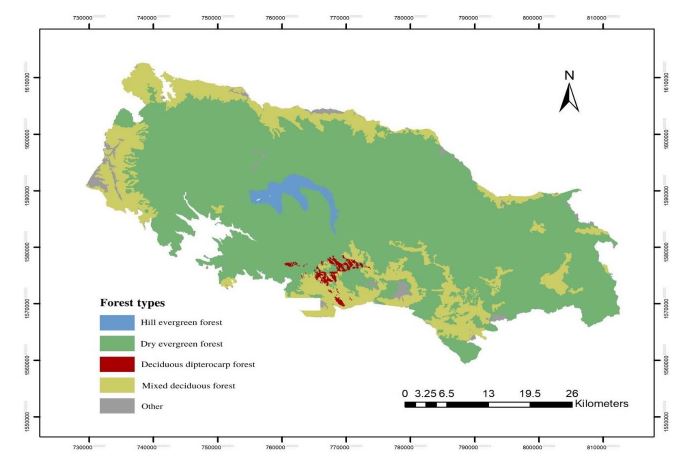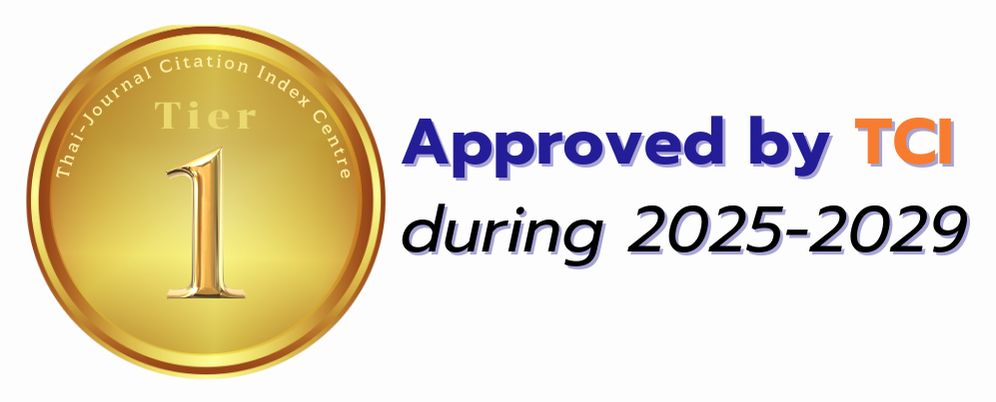Some Ecology and Distribution of Polyalthia khaoyaiensis P. Bunchalee & Chantar. in Khao Yai National Park
Keywords:
endemic plants, Polyalthia khaoyaiensis, distribution model, habitat suitabilityAbstract
This research aimed to study some ecological aspects and constructed a distribution model of Polyalthia khaoyaiensis P. Bunchalee & Chantar. in Khao Yai National Park. The transect method was conducted based on 7 nature trails. The temporary sampling plots, 10 m. x 10 m. and 4 m. x 4 m., was set up in each area that found P. khaoyaiensis for plant community observation. The Maxent software version 3.4.4 was applied for constructed a distribution model of P. khaoyaiensis in Khao Yai National Park. The results showed that the presence of P. khaoyaiensis in 70 positions. Euphorbia Family is the most diverse plants species (10 species) that established together with P. khaoyaiensis. Five species of trees with the highest importance value index were P. khaoyaiensis, Gonocaryum lobbianum (Miers) Kurz, Dipterocarpus gracilis Blume, Ardisia complanata Wall. and Excoecari oppositifolia Griff. with values of 105.73, 40.67, 12.51, 9.80, and 8.66 % %, respectively. A species diversity index of Shannon - Wiener was 3.19. The efficiency values arising from the receiver operation characteristic (ROC) model in the area of distribution of P. khaoyaiensis, obtained from the area under curve (AUC) was 0.949. The suitable distribution areas for P. khaoyaiensis, was divided into 3 levels; high, moderately, and low levels with areas of 87.58, 346.31 and 1,727.32 km2, respectively which accounted for 4.05, 16.02 and 79.93 % of the total areas of Khao Yai National Park, respectively. The environmental factors with proportionality the relationship with distribution of P. khaoyaiensis were geology, average minimum temperature, average annual rainfall, average maximum temperature, slope, aspect, average temperature, distance from water sources and elevation, respectively. The results of this study can be used as a database for endemic plants management planning in Khao Yai National Park.
Downloads



.png)





